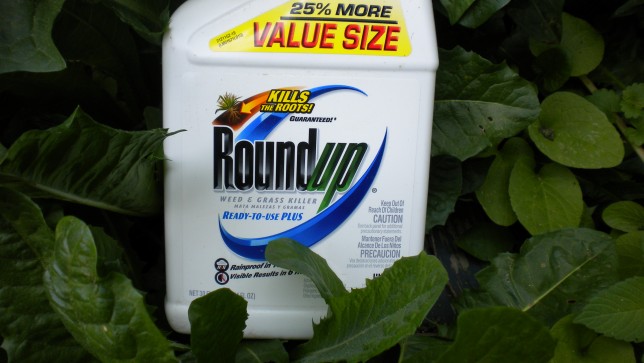After less than two full days of deliberations, a California jury ordered Monsanto to pay just over $2 billion in punitive and compensatory damages to a married couple who both developed non-Hodgkin lymphoma they say was caused by their many years of using glyphosate-based Roundup products.

Source: usrtk.org
After listening to 17 days of trial testimony, jurors said Monsanto must pay $1 billion to Alberta Pilliod, who was diagnosed with non-Hodgkin lymphoma brain cancer in 2015, and another $1 billion to her husband Alva Pilliod, who was diagnosed in 2011 with non-Hodgkin lymphoma that spread from his bones to his pelvis and spine. The couple, who are both in their 70s, started using Roundup in the 1970s and continued using the herbicide until only a few years ago. The jury also awarded the couple a total of $55 million in damages for past and future medical bills and other losses.
In ordering punitive damages, the jury had to find that Monsanto “engaged in conduct with malice, oppression or fraud committed by one or more officers, directors or managing agents of Monsanto” who were acting on behalf of the company.
Pilliod v. Monsanto is the third Roundup cancer case to go to trial. And it is the third to conclude that Monsanto’s glyphosate-based herbicides can cause cancer and that Monsanto has long known about – and covered up – the risks.
In March, a unanimous jury in federal court in San Francisco ordered Monsanto to pay roughly $80 million in damages for failing to warn plaintiff Edwin Hardeman of the cancer risks of Roundup herbicide. Last August, jurors in state court in San Francisco ordered Monsanto to pay $289 million in damages to school groundskeeper Dewayne “Lee” Johnson, who is dying of non-Hodgkin lymphoma the jury found was caused by his exposure to Monsanto’s glyphosate herbicides. The judge in that case lowered the total verdict to $78 million and the verdict is now on appeal.
Both Johnson and Hardeman attended closing arguments in the Pilliod trial.
Glyphosate Box
Glyphosate Residue Free Certification for Food Brands – Click Here
Test Your Food and Water at Home for Glyphosate – Click Here
Test Your Hair for Glyphosate and other Pesticides – Click Here to Find Out Your Long-Term Exposure
The Pilliod verdict is expected to only further erode the market value of Bayer AG, which purchased Monsanto last summer for $63 billion. Shares have dropped more than 40 percent since the Aug. 10 Johnson verdict was handed down.
Evidence laid out in the three trials included numerous scientific studies that showed what plaintiffs’ attorneys said was proof Monsanto’s herbicides can cause non-Hodgkin lymphoma. As well, the attorneys presented jurors with many internal Monsanto communications obtained through court-ordered discovery that show Monsanto has intentionally manipulated the public record to hide the cancer risks.
Among the many revelations that have emerged from the trials:
* Monsanto never conducted epidemiology studies for Roundup and its other formulations made with the active ingredient glyphosate to evaluate the cancer risks for users.
* Monsanto spent millions of dollars on covert public relations campaigns to finance ghostwritten studies and articles aimed at discrediting independent scientists whose work found dangers with Monsanto’s herbicides.
* When the US Agency for Toxic Substances and Disease Registry sought to evaluate glyphosate toxicity in 2015, Monsanto engaged the assistance of EPA officials to delay that review.
* Monsanto enjoyed a close relationship with certain officials within the Environmental Protection Agency (EPA), who have repeatedly backed Monsanto’s assertions about the safety of its glyphosate products.
* The company internally had worker safety recommendations that called for wearing a full range of protective gear when applying glyphosate herbicides, but did not warn the public to do the same.
Pilliod attorney Brent Wisner suggested to jurors in his closing arguments that they consider punitive damages in the range of $1 billion to send a message to Monsanto and Bayer about the need to change the company’s practices.


















